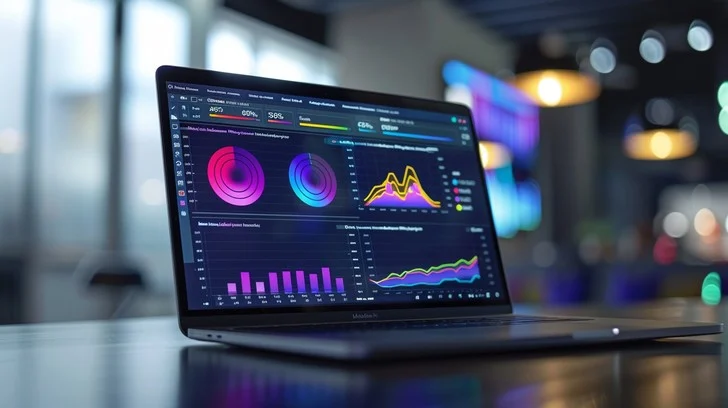Explore how to drive conversions by improving every stage of your marketing funnel—from awareness to loyalty—with actionable full-funnel strategies.

Table of Content
Overview Top-of-Funnel: Capturing Attention Middle-of-Funnel: Building Trust Bottom-of-Funnel: Converting with Confidence Measuring Funnel Effectiveness Conclusion Frequently Asked QuestionsOverview
In a hyper-competitive digital world where attention spans are short and options are endless, brands must move beyond isolated tactics and adopt a cohesive funnel strategy. The path from the initial click to loyal customer is no longer a straight line — it involves a web of touchpoints, each requiring thoughtful planning and optimization. Full-funnel marketing ensures that you guide your audience with intention, value, and clarity at every stage of the journey.
This guide walks you through how to structure a performance-driven funnel by aligning content, messaging, user experience, and conversion strategies. From grabbing attention with relevant top-of-funnel content to securing long-term loyalty through post-purchase nurturing, every phase of the funnel plays a pivotal role in driving growth. Understanding and optimizing the full-funnel experience can be the difference between high bounce rates and high-performing conversions.
Top-of-Funnel: Capturing Attention
The top of the funnel is where users first discover your brand. It's your opportunity to introduce your value proposition and spark curiosity. Whether through organic search, social media, or paid advertising, the goal here is to attract attention from your ideal audience. But attention is fleeting unless it's grounded in relevance. That means your messaging must resonate with the user's goals, pain points, and current mindset.
Brands that succeed at this stage focus on content that educates, entertains, or solves micro-problems. Blog posts, videos, quizzes, and free resources can help build rapport and pull users deeper into your funnel. Invest in understanding user intent and craft highly targeted campaigns—ensuring your visibility translates into genuine interest. Don't just reach people; reach the right people with the right message at the right time.
Middle-of-Funnel: Building Trust
This is the evaluation phase, where users are considering their options and looking for reasons to trust you. They want to know: “Is this the right solution for me?” Here, your job is to guide them forward with evidence, empathy, and ease. Your content must reduce friction and answer objections before they’re voiced. Webinars, comparison guides, success stories, and email drip campaigns serve to position your brand as not just a choice—but the best choice.
Trust is earned through transparency and consistency. Highlight real results through client testimonials, show your process with behind-the-scenes content, and nurture with valuable insights that match the user’s decision-making journey. Don't let leads stagnate at this stage—remind them you're listening, responsive, and prepared to help. Each interaction should deepen the user's confidence in your brand and solution.
Bottom-of-Funnel: Converting with Confidence
By now, your audience is leaning in. They're informed, interested, and close to making a decision—but hesitation is common. Your task is to eliminate any last-minute doubts and make the next step irresistible. Simplify the conversion path: clear CTAs, compelling offers, and a flawless UX all play crucial roles. Avoid overwhelming your users—clarity converts more than complexity.
Offer reassurance. Highlight security measures, provide satisfaction guarantees, or showcase real-time customer activity to trigger social proof. Personalized landing pages, one-click checkouts, and urgency triggers (limited-time offers or low stock indicators) can nudge users to take action now. The bottom of the funnel is your moment to deliver confidence. Treat it with as much creative care as your top-of-funnel ads.
Measuring Funnel Effectiveness
No strategy is complete without analytics. You need to know what's working and what's not—and why. Start by identifying the core KPIs for each stage of your funnel: click-through rates, conversion percentages, bounce rates, average time on page, and customer acquisition cost. Map the full user flow to uncover drop-off points and friction areas.
Use tools like Google Analytics, Mixpanel, or Hotjar to track behavior and test hypotheses. A/B testing can validate assumptions and guide iterative improvements. Don’t get caught in vanity metrics—optimize for what truly drives revenue and retention. A well-measured funnel becomes a powerful learning engine, helping you adapt faster than competitors and stay aligned with user expectations over time.
Conclusion
Marketing is no longer about just getting noticed—it's about guiding users through a meaningful, valuable experience that ends in trust, conversion, and loyalty. The brands that dominate markets today are those that think full-funnel. They don’t rely on gimmicks or guesswork—they craft intentional journeys rooted in empathy and data.
By focusing on every phase of the funnel with equal attention—from sparking awareness to earning advocacy—you don’t just build a user base; you build relationships. So, take the time to map your funnel, test every step, and refine relentlessly. When your funnel flows with clarity and purpose, the path from click to customer becomes not just efficient—but transformative.
Frequently Asked Questions
- What is full-funnel marketing?
It’s an approach that addresses every phase of the buyer’s journey—awareness, consideration, conversion, and retention—ensuring users have a consistent, helpful experience from start to finish. - How can I identify weak spots in my funnel?
Use analytics tools to visualize user drop-off points, gather feedback, and test alternative versions of content or UX flows to see where improvements can be made. - Should I focus more on top or bottom of the funnel?
Both are important. Top-of-funnel builds awareness and traffic, but without strong middle and bottom strategies, that traffic won’t convert or retain. - What tools help with funnel optimization?
Google Analytics, Hotjar, HubSpot, Unbounce, and ConvertKit are popular tools to track performance and streamline the funnel experience. - Can small businesses use full-funnel strategies?
Yes. Even with limited resources, startups can implement simple funnel frameworks that guide users step-by-step—from content to conversion—with intentionality.

Insights | July, 2025
Mastering Your Marketplace Brand Strategy for Success
Unlock long-term success by learning how to build a strategic brand presence in today’s fast-growing digital marketplaces.
Brandube

Insights | July, 2025
How AI Is Shaping Modern Website Design Trends
Discover how artificial intelligence is reshaping modern website aesthetics, functionality, and personalized user experiences in 2025 and beyond.
Brandube

Insights | June, 2025
Building Brand Loyalty Through Authentic Digital Storytelling
Discover how to build lasting brand loyalty by crafting genuine digital stories that connect emotionally, foster trust, and inspire repeat engagement.